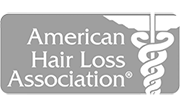Understanding the natural ebb and flow of hair growth
Understanding the natural ebb and flow of hair growth is crucial for anyone grappling with hair thinning or baldness. The hair loss cycle consists of three distinct phases: anagen, catagen, and telogen. Each plays a role in the life of a hair strand, and disruptions to this cycle can lead to noticeable hair loss.
The Phases of Hair Growth
The anagen phase, also known as the active growth phase, can last several years, with hairs growing around half an inch per month. The majority of your hairs are in this phase at any given time. Next is the catagen phase, a transitional stage that lasts about two to three weeks, where the hair follicle shrinks and hair growth slows. Finally, there’s the telogen phase, which is the resting phase. Lasting about three months, it concludes with the shedding of the hair strand, allowing a new strand to emerge and the cycle to recommence.
Disruptions in the Hair Loss Cycle
Various factors can disrupt the hair growth cycle. Genetics plays a pivotal role, particularly in androgenetic alopecia, where a genetic predisposition affects hair follicles and their growth cycle. Hormones, particularly dihydrotestosterone (DHT), can shorten the anagen phase and shrink hair follicles, leading to thinner hair strands.
Stress, whether emotional or physical, can push more hairs into the telogen phase, a condition known as telogen effluvium, resulting in increased shedding and temporary thinning. Nutritional deficiencies, particularly of proteins, vitamins, and minerals essential for hair growth, can also negatively impact the hair cycle.
Charles Medical Group’s Intervention in the Hair Loss Cycle
At Charles Medical Group, Dr. Glenn M. Charles employs his extensive expertise to combat hair loss by intervening in the hair growth cycle. Hair restoration techniques such as Follicular Unit Extraction (FUE) and Follicular Unit Transplantation (FUT) can restore hair by transplanting healthy follicles into areas affected by thinning or baldness. These follicles then enter the anagen phase and begin to grow, effectively integrating into the natural hair growth cycle.
Preventative Measures and Daily Care
To maintain a healthy hair growth cycle, it’s essential to adopt a comprehensive hair care regimen that includes proper nutrition, stress management, and avoiding harsh hair treatments. Medications like finasteride can inhibit the action of DHT, and minoxidil can prolong the anagen phase, promoting thicker hair growth.
Tailoring Hair Restoration at Charles Medical Group
Dr. Charles recognizes that each individual’s hair loss is unique, and so, hair restoration plans are customized to work with the patient’s natural hair loss cycle to achieve the best results. By incorporating state-of-the-art treatments like the ARTAS® Robotic Assisted FUE and preventive measures like LaserCap® therapy, Charles Medical Group ensures that the interventions not only improve hair density but also promote the longevity of the transplanted hairs.
In conclusion, understanding the hair loss cycle is the first step in addressing and managing hair restoration. With the guidance and expertise of Charles Medical Group, patients can navigate through their hair restoration journey with confidence, achieving natural-looking results that blend seamlessly with their natural hair growth cycle.





